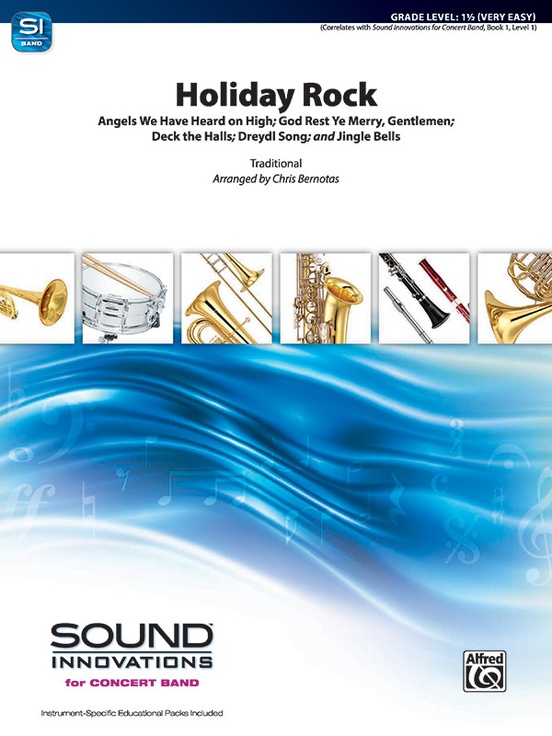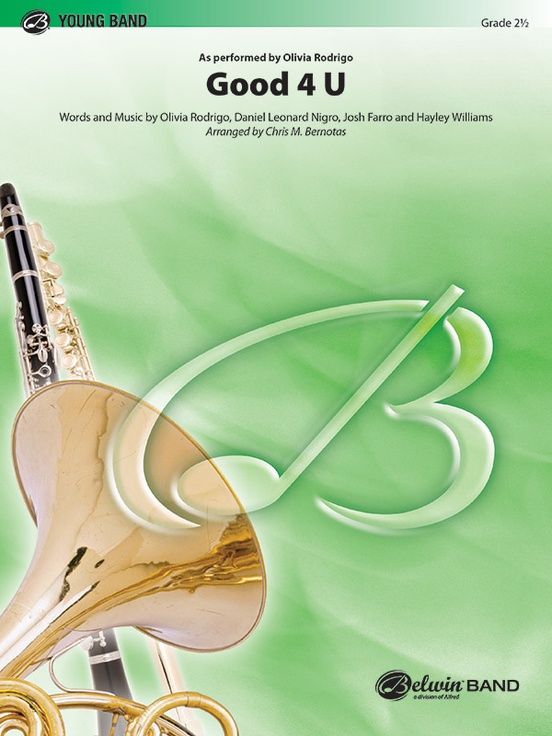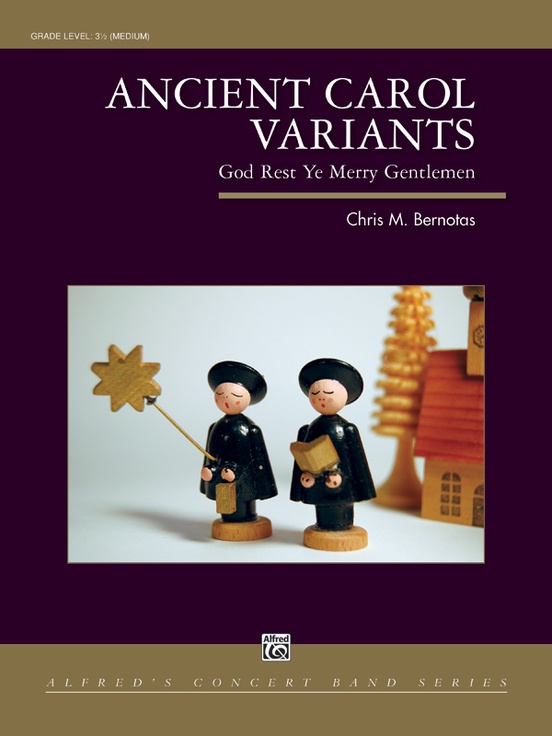Results
-
 £50.50
£50.50Holiday Rock
arranged by Chris M. Bernotas is a holiday mash-up that only uses the first six notes of the scale and is VERY easy---perfect for the first concert. With no articulations, dynamics, dotted notes, or key signature, this wonderful arrangement is playable by the youngest of bands. (2:20) Correlated to , Level 1. This title is available in MakeMusic Cloud.
Estimated dispatch 3-5 working days
-
 £52.95
£52.95Dancing Kites - Chris M. Bernotas
"Dancing Kites" is a gentle piece that will float around your performance hall. With a light, memorable melody and rich harmonies, this delightful composition exposes your students to musical subtleties and nuance. This is a perfect programming choice for students developing their abilities to perform in a lyrical style. (2:00) Correlates to Book 1, level 5. This title is available in MakeMusic Cloud.
Estimated dispatch 3-5 working days
-
 £64.95
£64.95Good 4 U
"Good 4 U", the popular and upbeat song by superstar songwriter and performer Olivia Rodrigo, has topped the Billboard charts and appears on the artist's debut album . She has been active as a professional singer and songwriter since she was 12 years old and can serve as an inspiration to young musicians. Like many pop songs, the care in performing syncopation and various articulations will provide a more authentic sound. Arranged by Chris M. Bernotas, the energetic music, powerful infectious chorus, and pure emotion will permeate the concert hall. (3:14) This title is available in MakeMusic Cloud.
Estimated dispatch 3-5 working days
-
 £87.50
£87.50Ancient Carol Variants - Chris M. Bernotas
This delightful holiday arrangement is based on the well-known melody of "God Rest Ye Merry Gentlemen." This fresh and exciting rendition of one of the most ancient of holiday carols will surely be a welcome addition to any holiday concert. (5:00)
Estimated dispatch 3-5 working days
-
 £82.95
£82.95Christmas Is Here!
, arranged by Chris M. Bernotas, highlights fresh treatments of some of the most celebrated Christmas favorites and will help ring in the season with good tidings for all! This stunning medley features "Joy to the World," "O Come, O Come, Emmanuel," and "We Three Kings." There are three contrasting sections, starting with excitement, then a bit of mystery, and finally, a rhythmic 5/4 treatment of the "Ukrainian Bell Carol." Sure to be a perennial favorite! (4:15)
Estimated dispatch 3-5 working days
-
 £77.50
£77.50A Hanukkah Festival - Chris M. Bernotas
is a medley of three traditional Hanukkah songs, "Sevivon," "Maoz Tzur," and "Hanukkah." "Sevivon" has a dramatic melody and is written with a variety of accompaniment leading to a brief, but impressive, clarinet cadenza that leads into "Maoz Tzur." This traditional piece is scored with full, rich voicings along with the beautiful melody. "Hanukkah" is the festival of lights and the last section of the piece. It is a bright playful march with an exciting conclusion. is filled with memorable tunes that students and audiences will enjoy while paying homage to this important holiday. (5:17)
Estimated dispatch 3-5 working days
-
 £49.95
£49.95Atomic Clock - Chris M. Bernotas
The Atomic Clock is the most accurate clock in the world. Challenge your students to be the most accurate performers by keeping a steady pulse! Energy and excitement are created while using only six notes by incorporating interesting melodic and harmonic tension and release. (1:55) Correlates to Book 1, Level 2.
Estimated dispatch 3-5 working days
-
 £49.95
£49.95Worksite - Chris M. Bernotas
"Worksite" will become a band member and director favorite with its infectious melody and exciting percussion feature. Break out the buckets and garbage cans for this one as they will be taking center stage, making music in the construction zone. Standard percussion instruments can be substituted and are marked in the score. (2:15)
Estimated dispatch 3-5 working days
-
 £73.50
£73.50Ride Through the Valley - Chris M. Bernotas
This version of by Chris Bernotas is part of our Alfred FLEX offerings and is designed with maximum flexibility for use by any mix of instruments---wind, strings, and percussion, including like- or mixed-ensembles with as few as 5 players. The suggested instrumentation and a customizable Teacher Map will help you plan out how to best assign parts to suit your ensemble's needs. It also comes with supplemental parts for maximum flexibility. With the purchase of this piece, permission is granted to photocopy the parts as needed for your ensemble. A percussion accompaniment track is also available as a free download. String parts have been carefully edited with extra fingerings and appropriate bowings to support students in mixed ensembles playing in less familiar keys. The fast-paced opening of Bernotas' builds momentum, leading to a bright and tuneful main theme. A lyrical contrasting section follows featuring a warmth of colors enhanced by vibraphone and gracefully cascading arpeggiated pyramids. A brief transition leads to a return of the main theme including a key change, bringing the piece to a driving conclusion. (4:26) Percussion Accompaniment Track Downloads: . .This title is available in MakeMusic Cloud.
Estimated dispatch 3-5 working days
-
 £64.95
£64.95Made You Look
is a smash hit performed by the GRAMMY Award winning singer/songwriter Meghan Trainor. This terrific song, arranged by Chris M. Bernotas, is full of energy and spirit! The infectious melody will have your audience dancing in the aisles. (2:20)
Estimated dispatch 3-5 working days
